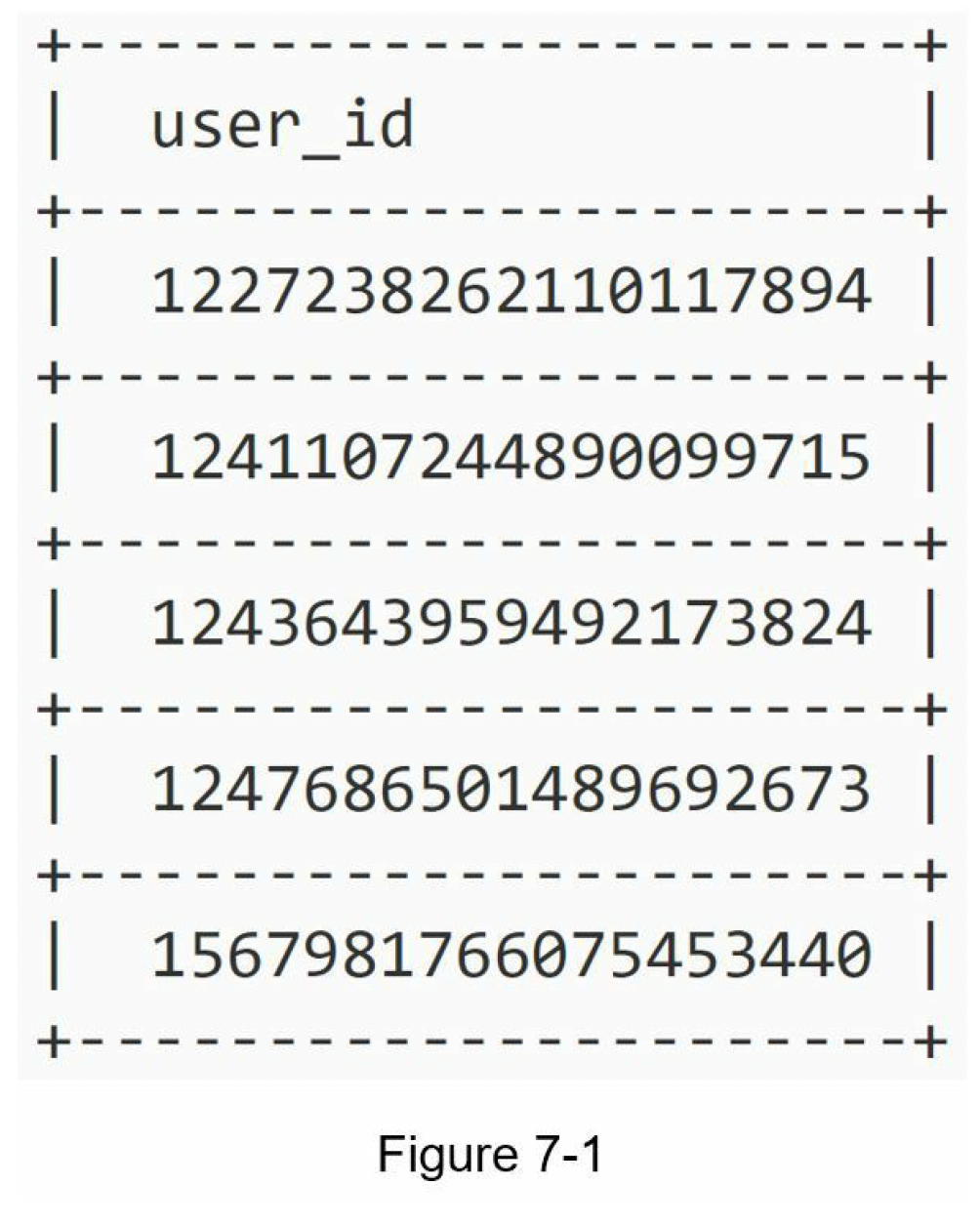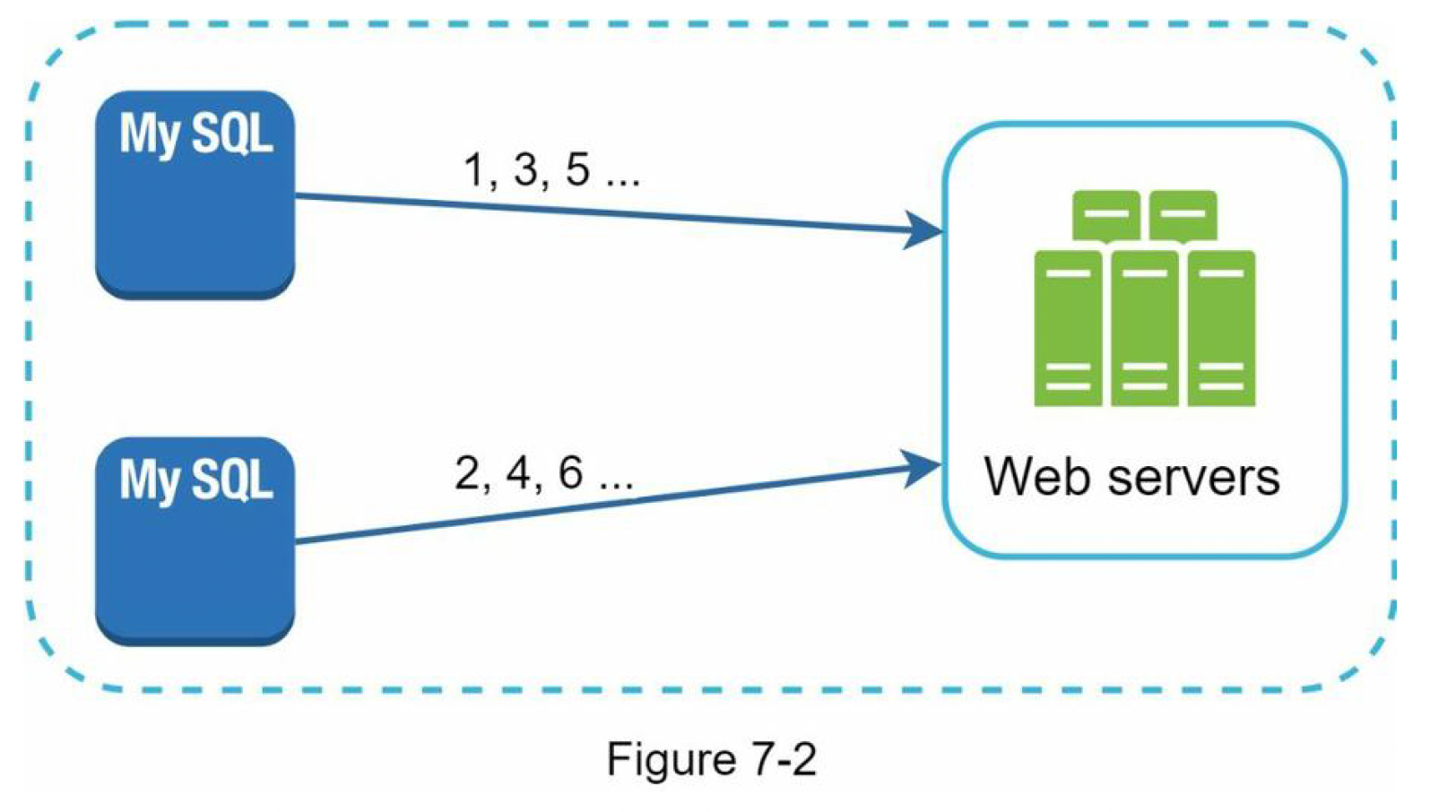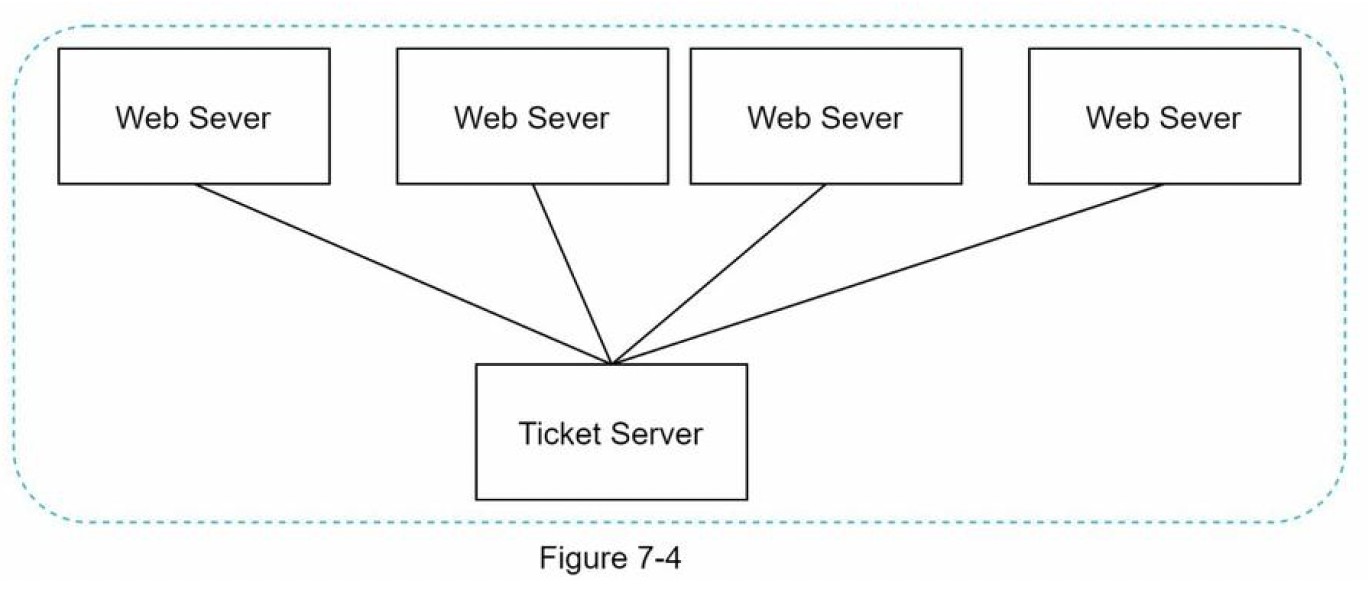Chapter 7: Design a Unique ID Generator in Distributed Systems
note
You are asked to design a unique ID generator in distributed systems.
First thought
Using a primary key with the
auto_incrementattribute in a traditional database
- Does not work in a distributed environment because
- a single database server is not large enough
- generating unique IDs across multiple databases with minimal delay is challenging

Step 1 - Understand the problem and establish design scope
- Clarification questions
- Candidate: What are the characteristics of unique IDs?
- Interviewer: IDs must be unique and sortable.
- Candidate: For each new record, does ID increment by 1?
- Interviewer: The ID increments by time but not necessarily only increments by 1. IDs created in the evening are larger than those created in the morning on the same day.
- Candidate: Do IDs only contain numerical values?
- Interviewer: Yes, that is correct.
- Candidate: What is the ID length requirement?
- Interviewer: IDs should fit into 64-bit.
- Candidate: What is the scale of the system?
- Interviewer: The system should be able to generate 10,000 IDs per second.
- the requirements are listed as follows
- IDs must be unique.
- IDs are numerical values only.
- IDs fit into 64-bit.
- IDs are ordered by date.
- Ability to generate over 10,000 unique IDs per second.
Step 2 - Propose high-level design and get buy-in
-
Multi-master replication

- uses the databases’
auto_incrementfeature - increasing the next ID by
1, we increase it byk - where k is the number of database servers in use
- ✅ Pros:
- solves some scalability issues because IDs can scale with the number of database servers.
- ❌ Cons:
- Hard to scale with multiple data centers
- IDs do not go up with time across multiple servers.
- It does not scale well when a server is added or removed
- uses the databases’
-
UUID
- UUID is a
128-bitnumber used to identify information in computer systems. e.g.09c93e62-50b4-468d-bf8a-c07e1040bfb2
- ✅ Pros:
- low probability of getting collusion
- UUIDs can be generated independently without coordination between servers
after generating 1 billion UUIDs every second for approximately 100 years would the probability of creating a single duplicate reach 50%”
- The system is easy to scale
- because each web server is responsible for generating IDs they consume.
- ID generator can easily scale with web servers.
- ❌ Cons:
- IDs are 128 bits long, but our requirement is 64 bits.
- IDs do not go up with time.
- IDs could be non-numeric.
- UUID is a
-
Ticket Server
- The idea is to use a centralized auto_increment feature in a single database server

- ✅ Pros:
- Numeric IDs.
- It is easy to implement, and it works for small to medium-scale applications.
- ❌ Cons:
- Single point of failure
- To avoid a single point of failure → we can set up multiple ticket servers → will introduce new challenges such as data synchronization.
- ✅ Pros:
- The idea is to use a centralized auto_increment feature in a single database server
-
Twitter snowflake approach
- Twitter’s unique ID generation system called “snowflake” is inspiring and can satisfy our requirements.
- Divide and conquer → Instead of generating an ID directly → we divide an ID into different sections
- the layout of a
64-bitID
- Sign bit:
1 bit. It will always be0. This is reserved for future uses. It can potentially be used to distinguish between signed and unsigned numbers. - Timestamp:
41 bits. Milliseconds since the epoch or custom epoch. We use Twitter snowflake default epoch1288834974657, equivalent toNov 04, 2010, 01:42:54 UTC. - Datacenter ID:
5 bits, which gives us2 ^ 5 = 32datacenters. - Machine ID:
5 bits, which gives us2 ^ 5 = 32machines per datacenter. - Sequence number:
12 bits. For every ID generated on that machine/process, the sequence number is incremented by1. The number is reset to0every millisecond.
Step 3 - Design deep dive
-
Fixed: Datacenter IDs and machine ID
- Any changes in datacenter IDs and machine IDs require careful review since an accidental change in those values can lead to ID conflicts.
-
Timestamp
41 bits- are sortable by time
- binary representation is converted to UTC

- The maximum timestamp that can be represented in
41 bitsis2 ^ 41 - 1 = 2199023255551 milliseconds (ms), which gives us:~ 69 years = 2199023255551 ms / 1000 seconds / 365 days / 24 hours/ 3600 seconds - This means the ID generator will work for 69 years
- and having a custom epoch time close to today’s date delays the overflow time
- After 69 years, we will need a new epoch time or adopt other techniques to migrate IDs.
-
Sequence number
12 bits- 2 ^ 12 = 4096 combinations.
- This field is
0unless more than one ID is generated in a millisecond on the same server
Step 4 - Wrap up
- unique ID generator
- multimaster replication
- UUID
- ticket server
- Twitter snowflake-like unique ID generator
- a few additional talking points:
- Clock synchronization
- we assume ID generation servers have the same clock
- might not be true when a server is running on multiple cores and multi-machine scenarios
- ✅ popular solution: Network Time Protocol
- Section length tuning
- e.g. fewer sequence numbers but more timestamp bits are effective for low concurrency and long-term applications
- High availability
- Since an ID generator is a mission-critical system, it must be highly available